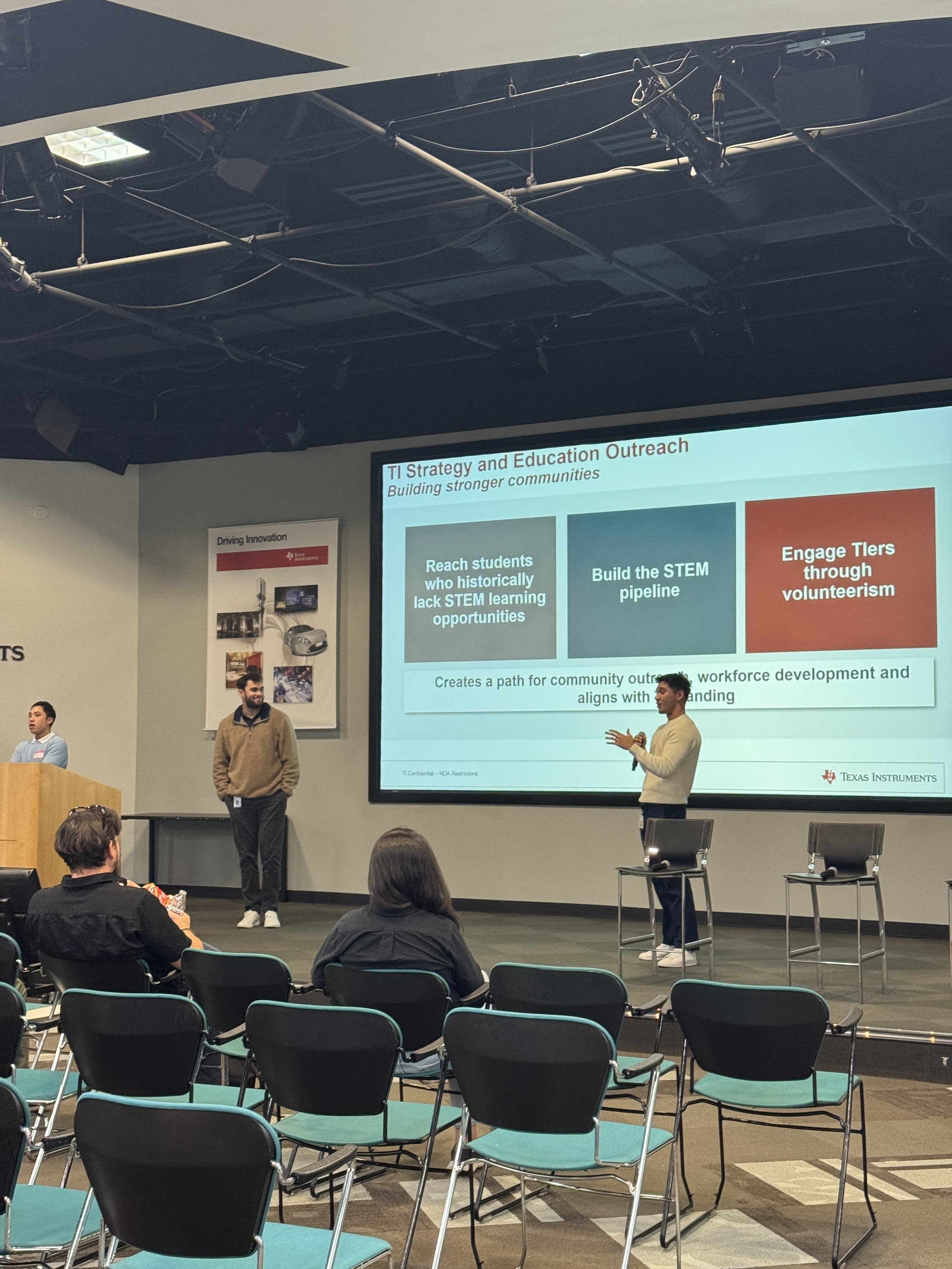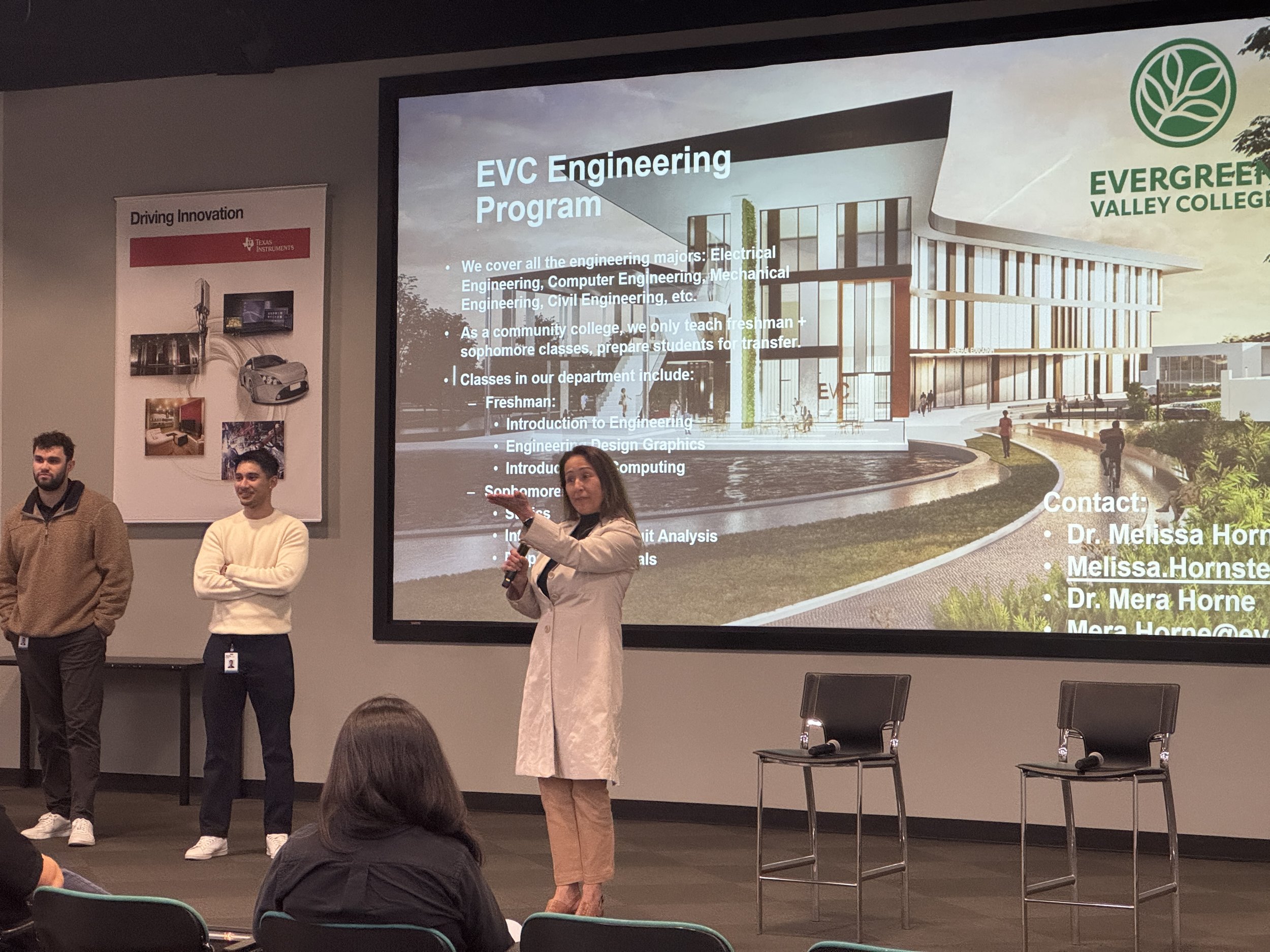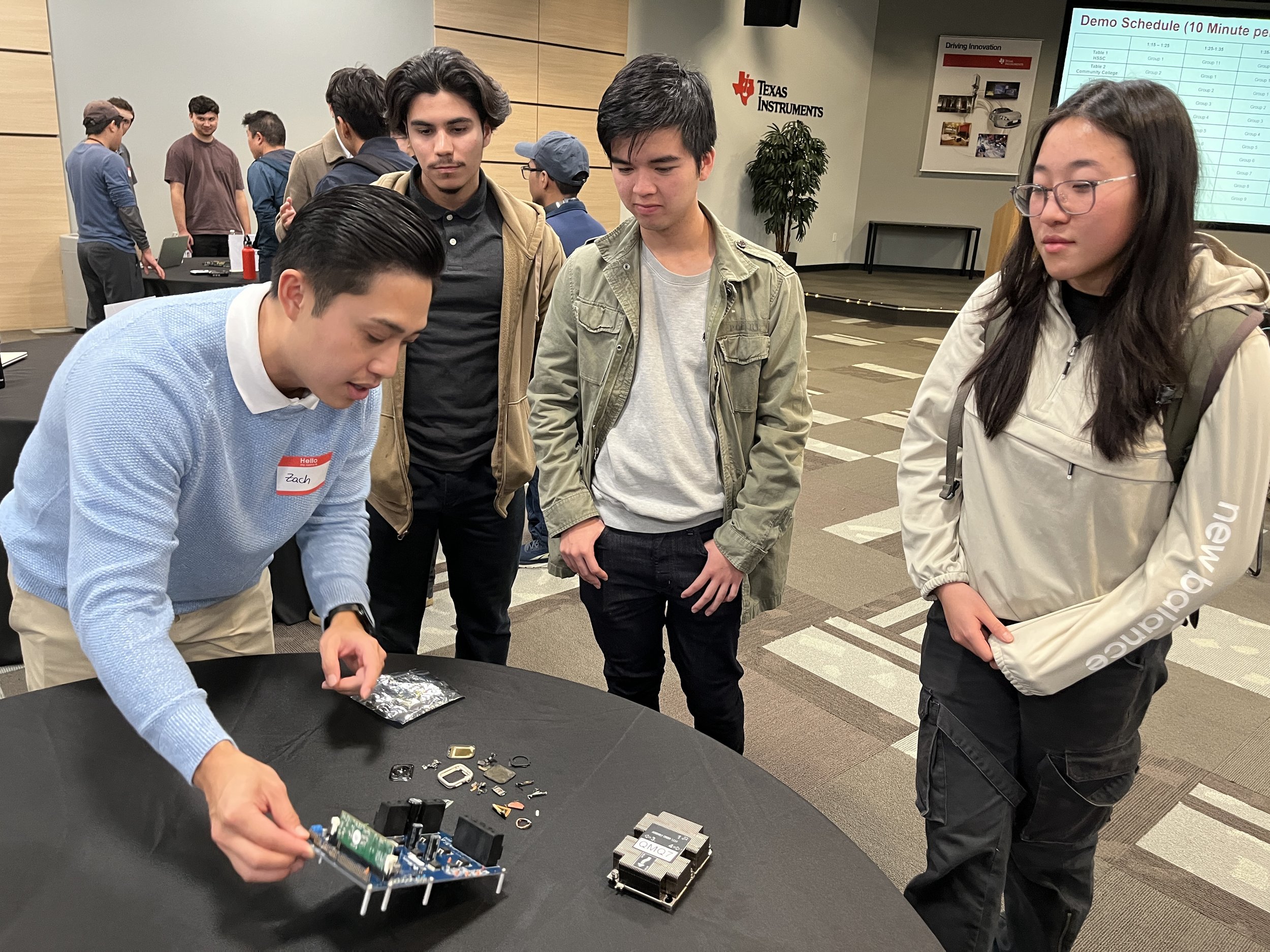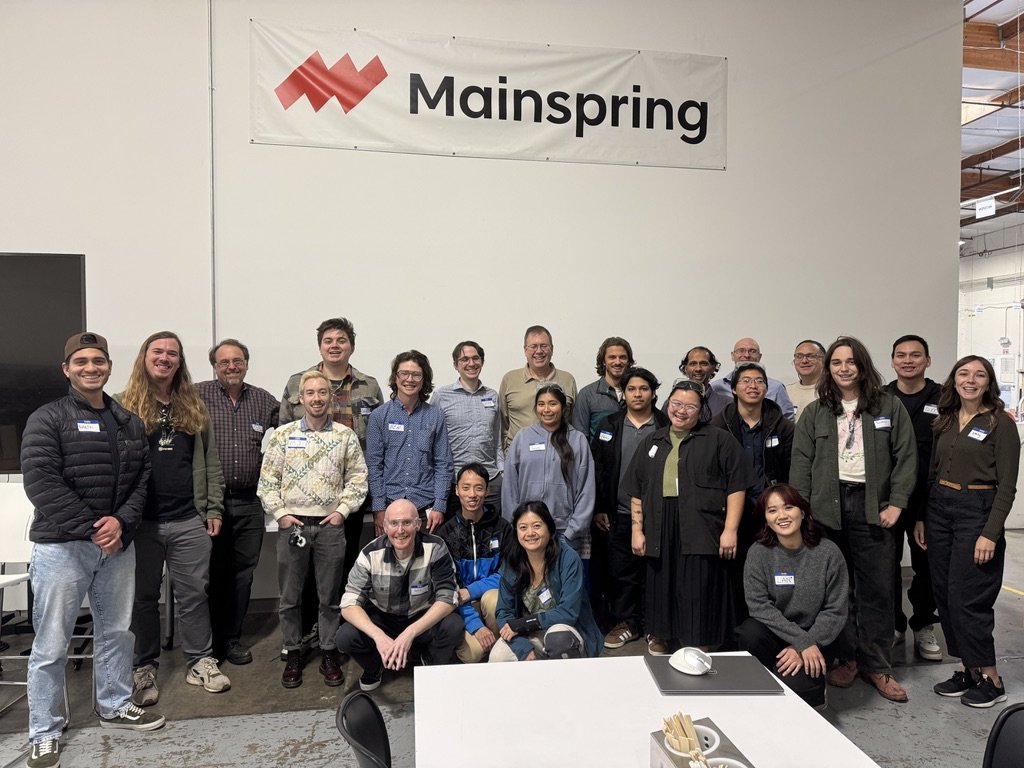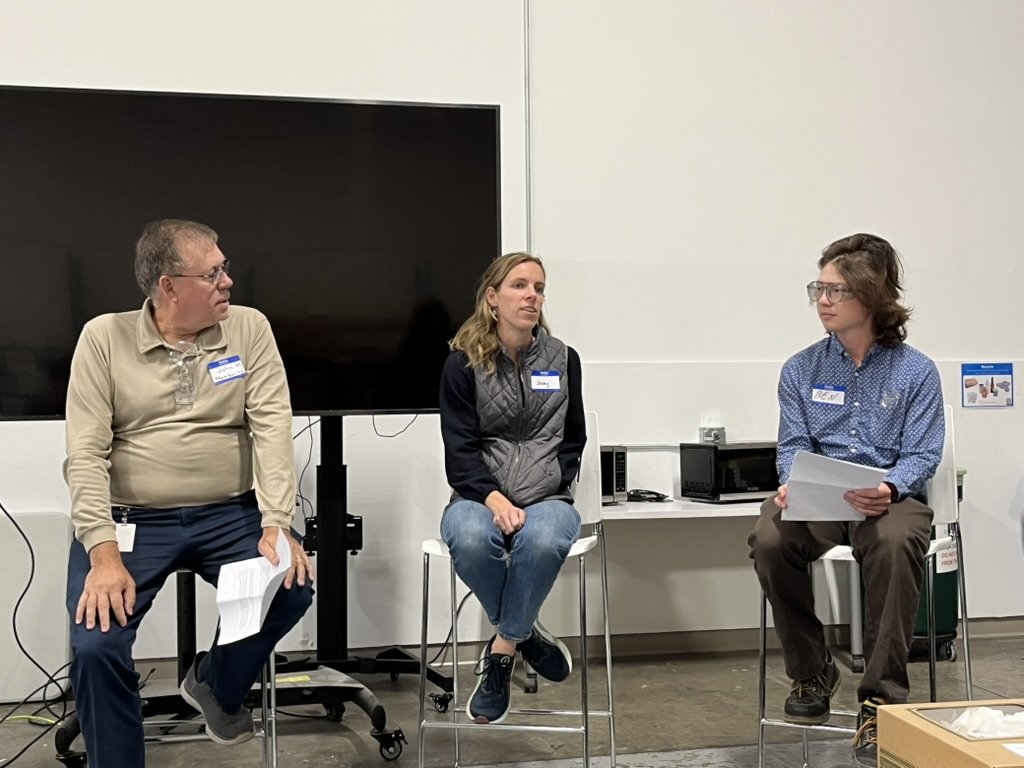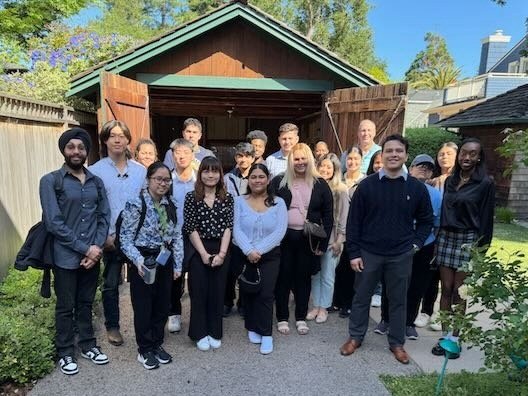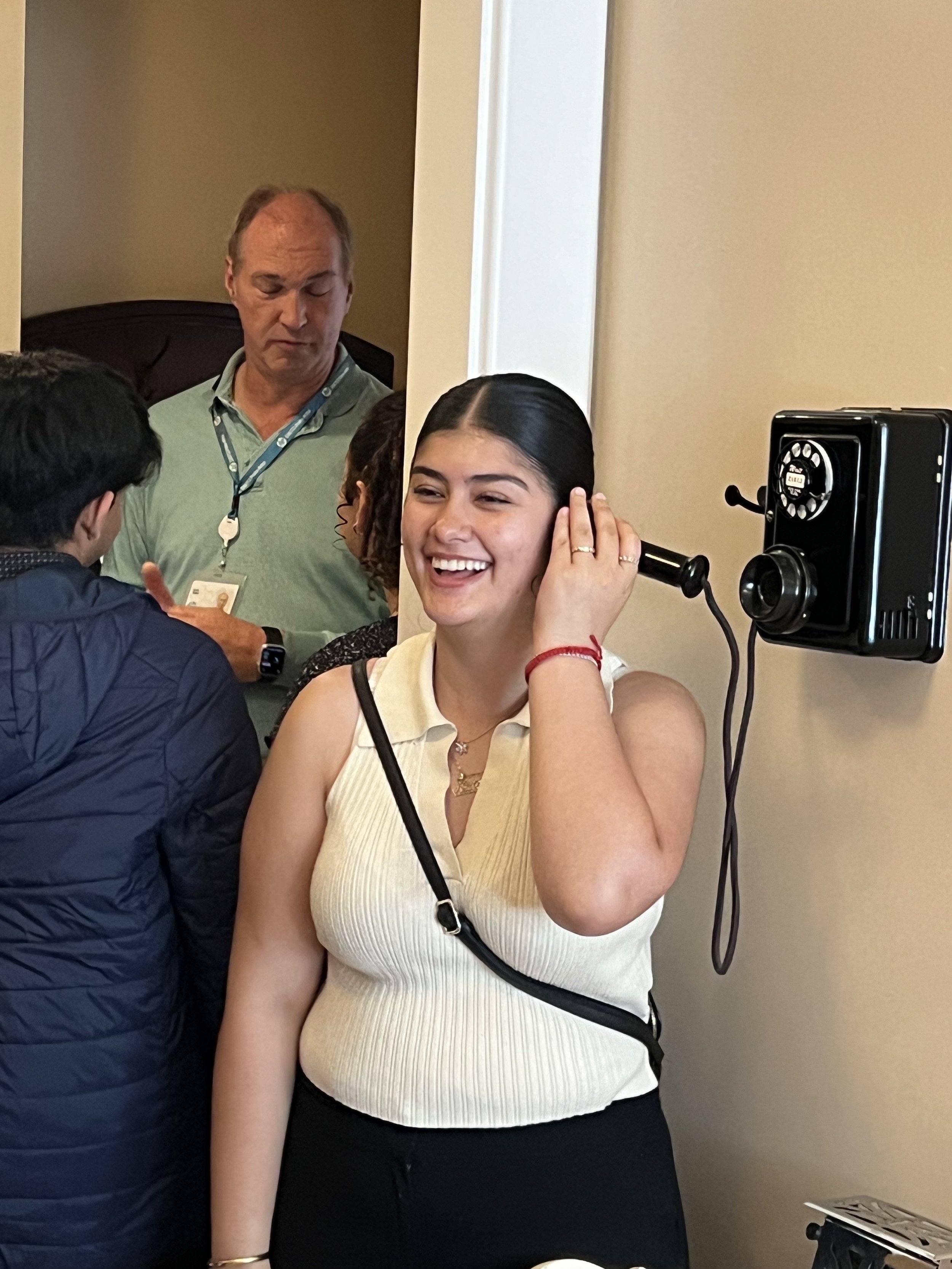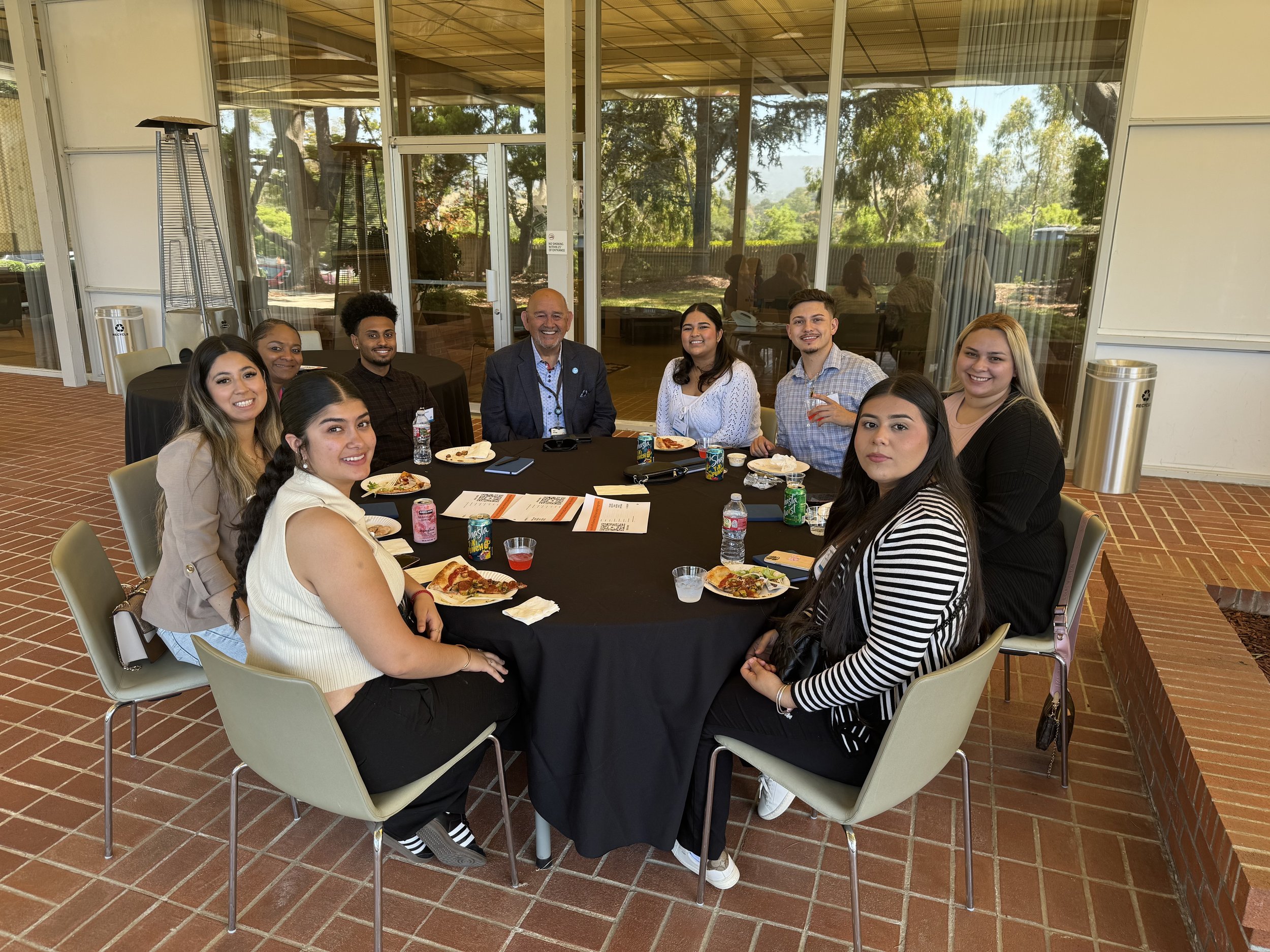CAREER EXPLORATION PARTNER
WORKSITE VISITS
Host students at your company for a tour, speaker session, and networking or mentoring opportunity. Worksite visits offer students the opportunity to observe daily operations and engage with employees about their educational and professional journeys. They bridge the gap between classroom learning and real-world application, help students understand potential career paths, and foster lasting relationships between employers and schools.
WORKSITE VISIT NARRATIVES
HOW IT WORKS
Employer
Provides students with a company tour, a speaker session, a networking or mentoring opportunity, and appropriate food and beverage.
We also ask that the host company bring employees to participate who share the backgrounds of the students.
Ideally, companies will engage their employee resource groups, and employers can leverage the SVLG ERG/BRG Consortium to help coordinate.
K-16 Collaborative
Recruits the students
The K-16 Collaborative can work with our extensive network of schools to supply a group of any size, from 5 to 500.
Our multilayered consortium allows us to do targeted recruiting based on employers’ outreach priorities: by school, program, demographics, etc.
Works with each educational institution to handle logistics.
Pays for students’ transportation.
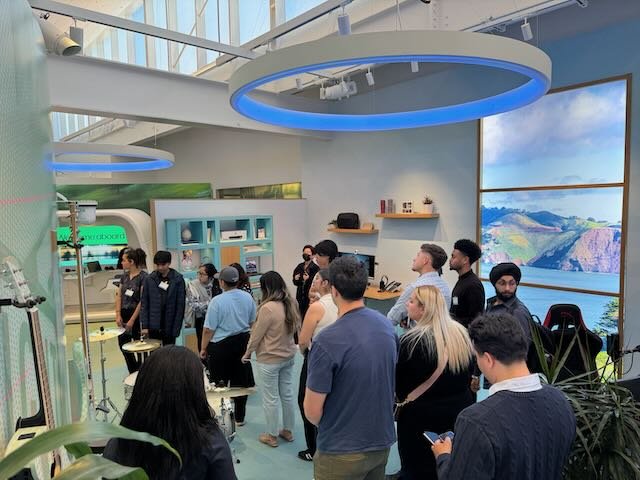
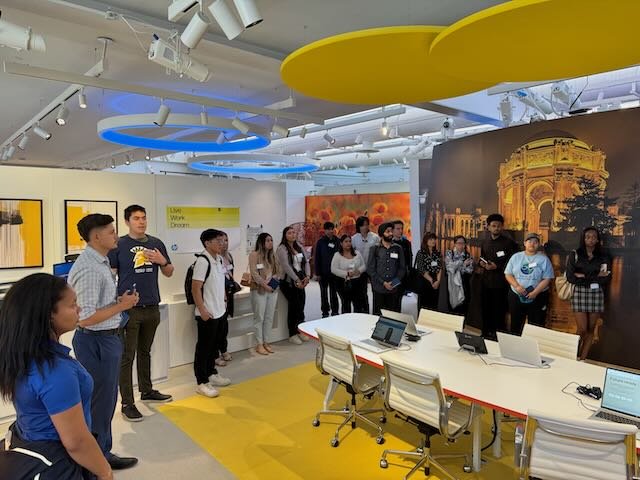
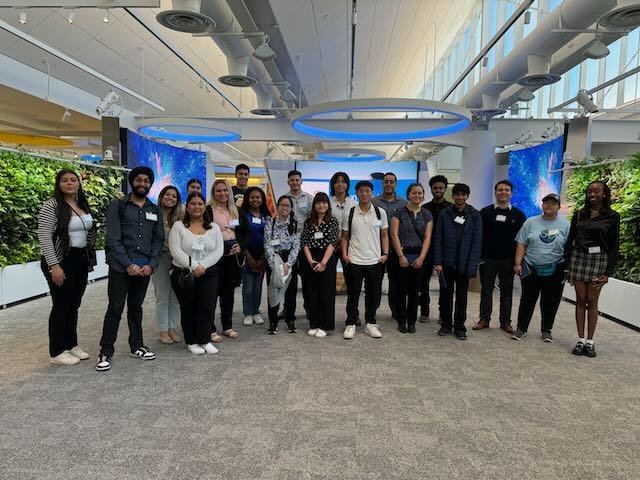
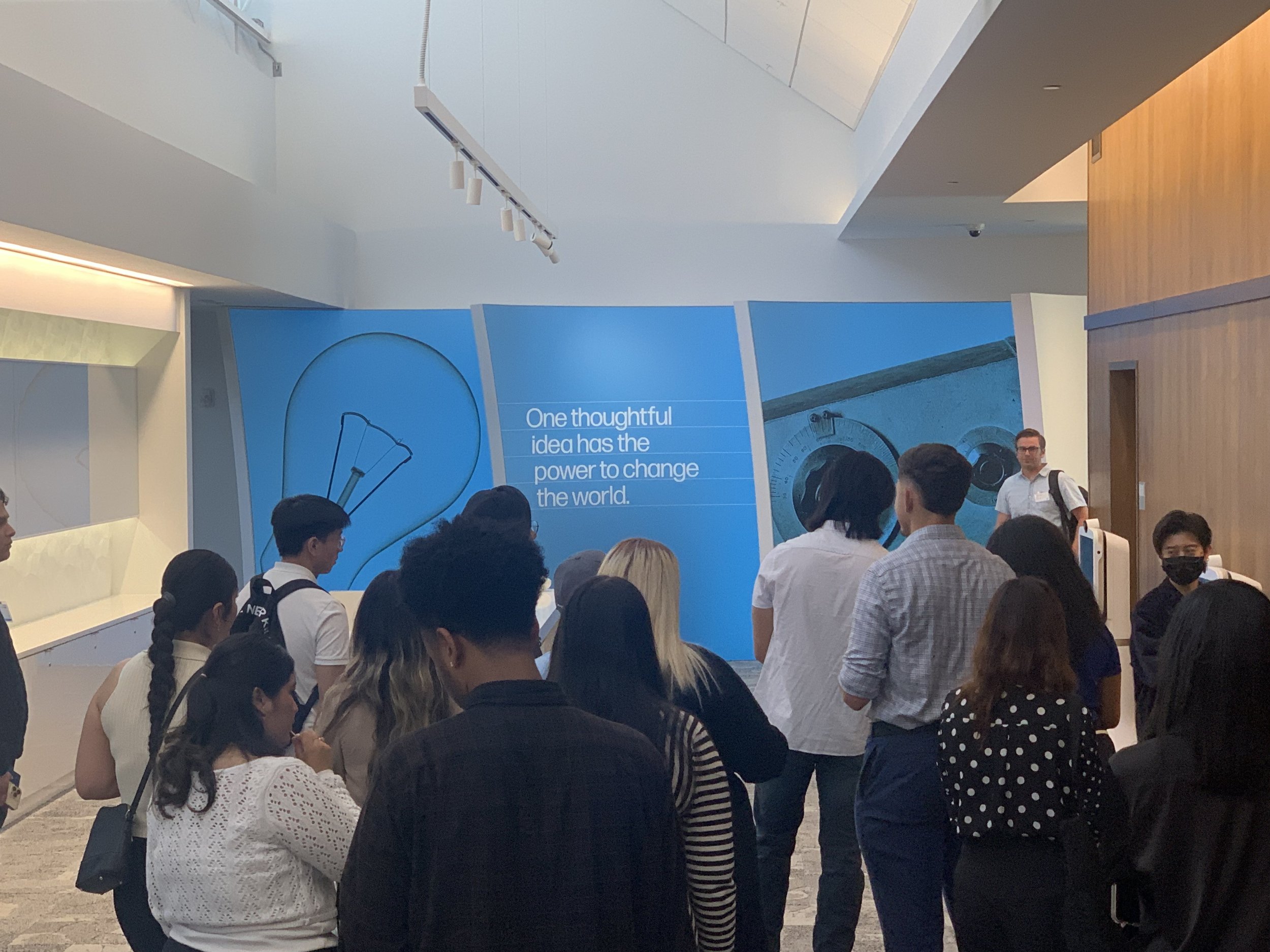
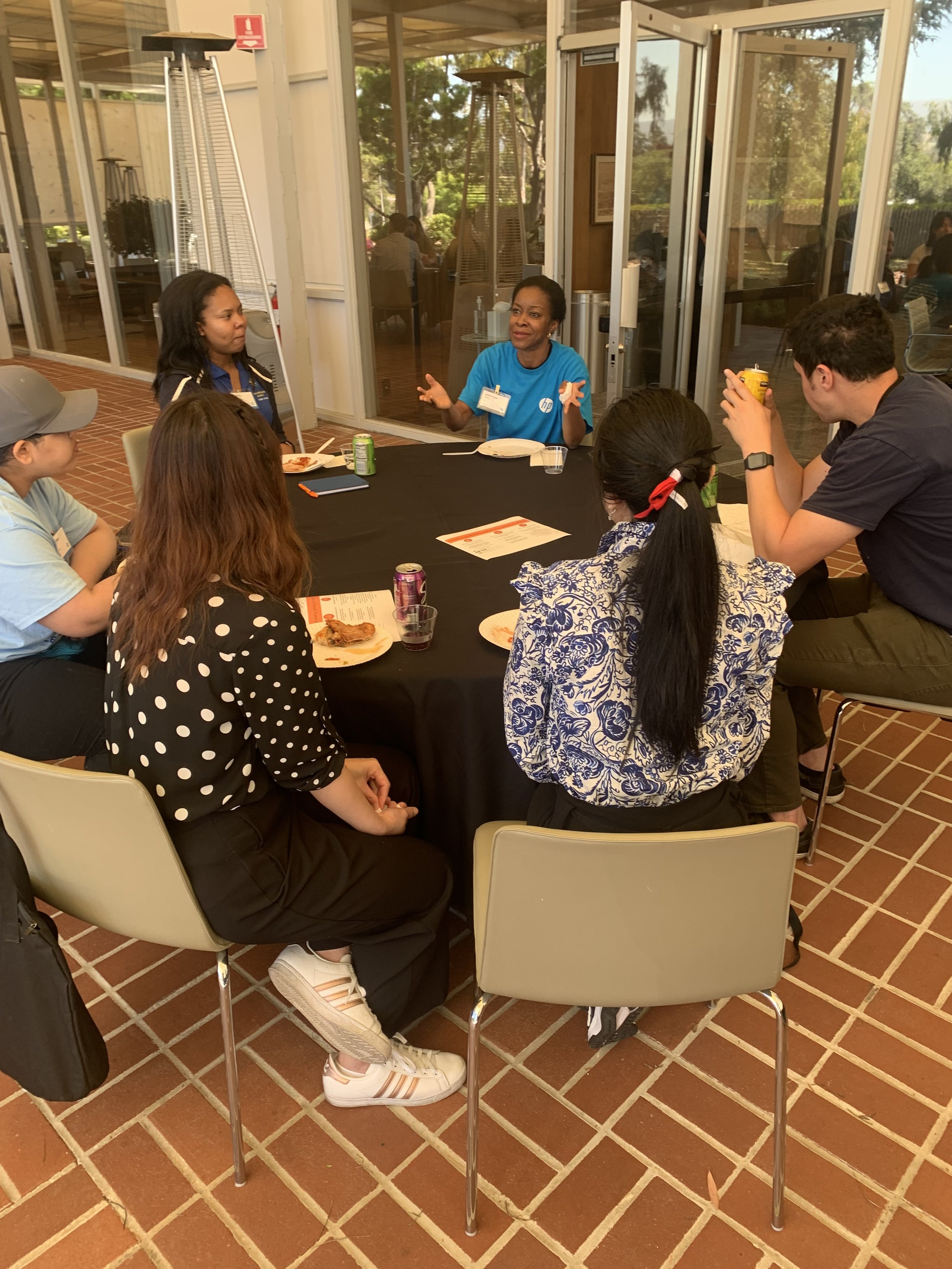
RECOMMENDATIONS
To ensure that a student worksite tour, panel, and networking session become impactful and enduring interventions, especially for students from BIPOC (Black, Indigenous, and People of Color) communities, the Bay Area K-16 Collaborative recommends that teachers and employers implement the following strategies.
Preparation and Orientation:
Employers: Provide pre-event materials explaining the company culture, event agenda, and professional expectations. Highlight stories of BIPOC employees to create a relatable context.
Educators: Offer thorough preparation and orientation, familiarizing students with the worksite, panelists, and networking expectations. Provide guidance on professional etiquette, networking skills, and cultural nuances.
Meaningful Engagement Opportunities:
Employers: Create interactive elements like Q&A sessions, small group discussions, or hands-on activities to encourage participation and collaboration.
Educators: Prepare students with questions and topics for discussion during interactive sessions. Encourage active participation and collaboration during the event.
Mentorship and Support:
Employers: Pair students with mentors, ideally from ERGs, who can provide guidance and support during the event and beyond. Foster a supportive environment where students feel valued and empowered to ask questions.
Educators: Help students identify potential mentors and support systems within the event. Provide guidance on how to seek and maintain mentorship relationships.
Representation and Diversity:
Employers: Ensure that panelists, speakers, and hosts represent diverse backgrounds and experiences. Prioritize inclusivity and diversity in selecting speakers and panelists.
Educators: Encourage students to engage with diverse role models. Highlight the importance of representation and diversity in professional settings.
Empowerment and Advocacy:
Employers: Empower BIPOC students to advocate for themselves, ask questions, and assert their presence and perspectives. Encourage them to voice their opinions and share their experiences confidently.
Educators: Encourage students to advocate for themselves, ask questions, and assert their presence and perspectives. Support them in voicing their opinions and sharing their experiences confidently.
Follow-Up Opportunities and Resources:
Employers: To extend the event's impact and align it to your diversity recruiting goals, provide the students with internship/job application codes that will tag them for special review by your recruiters. More broadly, provide access to networking platforms or other professional development resources, and organize follow-up sessions to reinforce learning and support continued growth.
Educators: Assist students in accessing and utilizing provided networking and professional resources. Encourage reflection on the experience and goal-setting for future career aspirations.
WORKSITE VISIT NARRATIVES
Principles of Engineering: EVC Students Attend Texas Instrument Worksite Visit
NOVEMBER 2024
This week, twenty students, primarily from the engineering department at Evergreen Valley Community College, explored Texas Instruments (TI) in Sunnyvale, California. Organized in partnership with TI’s Education Outreach Program led by Archana Venugopal and as part of the Bay Area K-16 Collaborative’s worksite visit series, the opportunity aimed to support early STEM students as they navigated coursework and careers, guided by a core message: STEM careers are rooted in problem-solving and adaptability. This approach encourages students to find solutions to complex challenges, applying problem-solving principles to their coursework and lives beyond academia
Panelists Encourage Students to Embrace Their Curiosities
The day started with an inspiring panel featuring senior technical leaders Yogesh Ramadass, Kevin Scoones, Ann Concannon, and product engineer Vincent Mello. The message from the panel was clear: seek out problems to solve. Concannon shared her passion for “finding elegant solutions to everyday challenges” and urged students to look for opportunities to practice problem-solving across all areas of life—from classrooms to careers to hobbies. She highlighted that engineering is a mindset extending far beyond traditional STEM fields, finding relevance in all industries.
Vincent Mello, a TI product engineer who joined the company in 2020, shared his journey from San Joaquin Delta College to San Francisco State University and finally to Texas Instruments. Vincent’s story resonated with students as he recounted his early experiences tinkering with electronics and his discovery of TI, where his love of math and electronics intersected. He encouraged students to embrace seemingly unrelated experiences as valuable learning opportunities; in his case, wiring work during a sailboating program proved helpful in his current role and even in TI’s interview process. The panelists emphasized that every experience matters on the journey to a STEM career, urging students to avoid pre-judging any opportunity—they never know what skills or connections might come in handy.
During the student Q&A, one student asked how new graduates should navigate a job market that has changed so much in recent years due to COVID and changing technology hiring patterns. The panelists advised students to focus on mastering the fundamentals and maintaining a curiosity-driven mindset. In a world with endless information at their fingertips, students who prioritize foundational skills and a desire for learning will always be in demand. Additionally, building relationships with mentors and champions along the way is essential for uncovering obvious and unexpected opportunities.
TI Is More Than Just a Calculator Company
After the panel, students moved through an interactive exhibit of ten stations covering technologies like HSSC, Sales, VRS, Clocking, Kilby, Ethernet, and Comparators, getting hands-on demonstrations from TI’s young professional employees. The rotations gave them a taste of the work done at TI and introduced them to new faces within the TI community. Vincent Mello also hosted a table further to discuss his career path from community college to TI, sharing one-on-one advice with students.
Reflecting on the experience, one engineering student remarked how transformative the trip had been. As the only person from his class who attended, he felt a renewed motivation to pursue electrical engineering, inspired by TI’s welcoming community and the many pathways to succeed in the field. Another student remarked that they learned that Texas Instruments is more than just a calculator company; there are a variety of disciplines and projects that students can be a part of and grow within.
The Bay Area K-16 Collaborative and SVLG Foundation extend heartfelt thanks to Archana Venugopal and Zachary Lau at Texas Instruments for their diligent planning and leadership in making this worksite visit a success. We also deeply appreciate the essential partnership and support from EVC’s STEM Dean, Dr. Antoinette Herrera, and Dr. Melissa Hornstein, EVC’s dedicated engineering faculty, in co-leading this initiative. A special thanks goes to Drew Thoms, Nick Peabody and Shams Fardeen at TI for their on-site support, as well as to EVC faculty Celso Batalha and Jack Ho for attending and engaging with the students.
Empowering Future Engineers: Chabot College visits NetApp through the Bay Area K-16 Collaborative
NOVEMBER 2024
Last week, the Silicon Valley Leadership Group Foundation was privileged to facilitate an event for 30 engineering and computer science students and staff from Chabot College and NetApp, a global leader in data storage and cloud computing. This visit was part of the Bay Area K-16 Collaborative’s worksite visit series, designed – within a continuum of work-based learning interventions – to bridge the wide gap between local students and the technology companies that power their region.
The day began with an informal networking lunch on NetApp's beautiful 5th-floor terrace overlooking Santana Row in San Jose, offering students a chance to speak 1:1 with supportive NetApp employees in the midst of a true Silicon Valley tech environment. For many, it was their first glimpse into the professional spaces where their careers could one day thrive.
After a well-designed “backstage tour” of NetApp’s campus, which included a visit to the server room—where the magic of data storage and cloud computing happens—and even stepping into a live sales meeting, the students met with NetApp’s internship program manager, Melanie Cruz. Students learned that internships at NetApp offer more than just hands-on experience—they are pathways to full-time roles at the company. One exciting takeaway: Melanie made sure that the students were given QR codes that placed them directly into the NetApp system, helping recruiters track their participation and prepare for interviews starting in the new year.
Lessons From NetApp Leaders: Networking and Overcoming Challenges
But it wasn’t just about internships. NetApp employees like Dominique Garcia, Gabby Landaveri, Angela Teodoro, Edith Bendermacher, and Philomena Bissue - all leaders in NetApp's Employee Business Resource Groups (EBRGs) - shared their personal stories of overcoming challenges and building careers in tech, offering advice for the students' own journeys.
Networking was the central theme of the day, as NetApp and the Bay Area K-16 Collaborative made sure to design an experience in which students had the opportunity to connect one-on-one with NetApp employees. Without any prompting, the value of this was articulated straightaway, with Dominique Garcia encouraging students to reach out to the employees they met: “We want to help you get a leg up on your internship applications!”
On a panel convened for the students in an elegant board room (where, meaningfully, all students had seats at the table), Angela Teodoro reinforced this advice, encouraging students to use LinkedIn as a tool for professional growth and to keep track of their connections. “Start building your own database,” she said.
The impact of the visit was clear, as students shared their takeaways about the importance of building connections and embracing the twists and turns of career navigation. Alex Banuelos Estrada noted, "I learned how important making connections is in not just getting a job but in life in general.” Another student was inspired to learn that “big tech companies... aren’t looking for the most skilled candidates but passionate ones," which helped demystify an often daunting field. As student Kaylan Dellostritto summarized wisely, “it is important to engage with my peers and communicate despite the fears I may feel.”
Strengthening Partnerships: Pathways to Future Collaboration
One of the most impactful discussions during the panel came when students asked the employees about imposter syndrome—the feeling that you don’t belong or aren’t qualified. Angela shared that even after being promoted to Chief of Staff, she still experiences imposter syndrome. “You will always have it,” she said, but encouraged students to build an “evidence folder” of their wins to combat it. Philomena also spoke about how imposter syndrome can be used to fuel growth: “It drives your ambition,” she said. Edith echoed the sentiment, advising students to find mentors who can help them navigate the challenges ahead.
The NetApp worksite visit was a powerful learning experience, giving students both a glimpse into the high-tech world and the tools, strategies, and connections needed to succeed. The event also helped foster stronger relationships between NetApp and local public colleges and universities, setting the stage for future collaborations. In the coming months, through the Bay Area K-16 Collaborative, participating employers and educators will continue to explore new opportunities for partnership, including advisory boards, guest speakers, co-curricular design, internships, apprenticeship, and career fairs.
NetApp’s commitment to nurturing the next generation of engineers and technologists is evident in their investment in these worksite visits and the mentorship they provide. For students like those from Chabot, these connections and experiences are invaluable as they work toward their futures in tech.
Building Bridges to a Sustainable Future: City College of San Francisco Visits Mainspring Energy through the Bay Area K-16 Collaborative
NOVEMBER 2024
Last Wednesday, 20 engineering and computer science students, faculty, and staff from City College of San Francisco (CCSF) visited clean energy company Mainspring Energy as part of the Bay Area K-16 Collaborative’s worksite visit series. The visit aimed to introduce students to real-world STEM applications, inspiring their academic and career journeys by connecting them directly with industry leaders and innovative technologies.
Mainspring Energy, known for its flexible, low-emission generators that support companies transitioning to clean energy, provided the perfect backdrop for this immersive experience. The visit was part of the K16 Collaborative’s mission to bridge community college pathways into STEM careers, and was crafted through an iterative process of co-design with employers and educators on the Bay Area K-16 Collaborative Steering Committee.
An Engaging Day of Exploration and Connection
Mainspring organized the day to provide a balanced blend of exploration and interaction. Students and professors toured Mainspring's R&D and manufacturing facilities in groups of ten, allowing for personalized discussions with Mainspring engineers on sustainable technology and real-world problem-solving.
The tour was particularly useful for engineering students Zeyang Luo, who shared that “being able to see the generator in person helped me quickly relate to what I am learning,” and Robert Raya, who noted that the tour highlighted “practical applications of engineering and environmental science education.”
One of the highlights was a panel organized by Mainspring’s Ben Sandstrom, featuring a Q&A session where CCSF students (special shout outs to CS majors Tea Priel and Yoko Lu!) asked thoughtful questions on everything from air pressure tolerances and cybersecurity concerns to broader queries about the private sector’s role in driving sustainable energy innovation.
Crucially, the visit also included a networking lunch with a one-to-one ratio of Mainspring employees to students, fostering direct, meaningful connections. This opportunity for individual engagement reinforced the day’s goal of bridging the educational and professional worlds for CCSF’s aspiring STEM leaders.
Special Thanks and Employer Perspectives
SVLG Foundation and the Bay Area K-16 Collaborative extends its gratitude to Mainspring’s team—especially Ben Sandstrom, Cecilia Reyes, and Lucy Kaye—for their commitment to making the event impactful beyond the day itself. Ben shared that creating hands-on exposure for community college students can spark lasting interest in their fields, and graciously spoke to the importance of having an intermediary like SVLG convene industry with educators to translate, set high expectations, and drive the relationship forward.
Mainspring’s thoughtfulness in structuring the day reflects a shared dedication to mentoring and supporting the next generation of engineers and technologists. Through visits like these, CCSF, Mainspring, and the Bay Area K-16 Collaborative are building pathways for diverse talent, helping to create a more inclusive and sustainable future for Silicon Valley.
HP Garage and Headquarters Visit
MAY 2024
Working with SVLG and the HP Black Employee Resource Group, the Bay Area K-16 Collaborative facilitated a worksite visit for seventeen software engineering and business students from San José State University. This select group, representing communities traditionally underrepresented in STEM careers, had the extraordinary opportunity to explore the birthplace of Silicon Valley: the HP garage.
Standing where Hewlett-Packard's trailblazing journey began, the students absorbed the historical significance of the site and envisioned their own potential to innovate.
The excitement continued with an exclusive tour of the HP Customer Welcome Center.
Here, HP leaders showcased cutting-edge technologies and the latest in HP's product lineup, providing invaluable insights into the intersection of technology and business, and sparking new aspirations among the students. The highlight of the visit was a dynamic networking lunch, where students engaged in intimate, small-group discussions with HP professionals.
These industry veterans shared their career journeys and imparted practical advice, offering a unique blend of mentorship and inspiration. The students left with a deeper understanding of the tech industry, as well as a concrete tool to uplevel their job search: HP provided each of them an application code that would identify them to recruiters should they apply for internships and jobs at HP!
The trip provided an unforgettable experience that underscored the vital role of industry partnerships in shaping the next generation of innovators and leaders.




